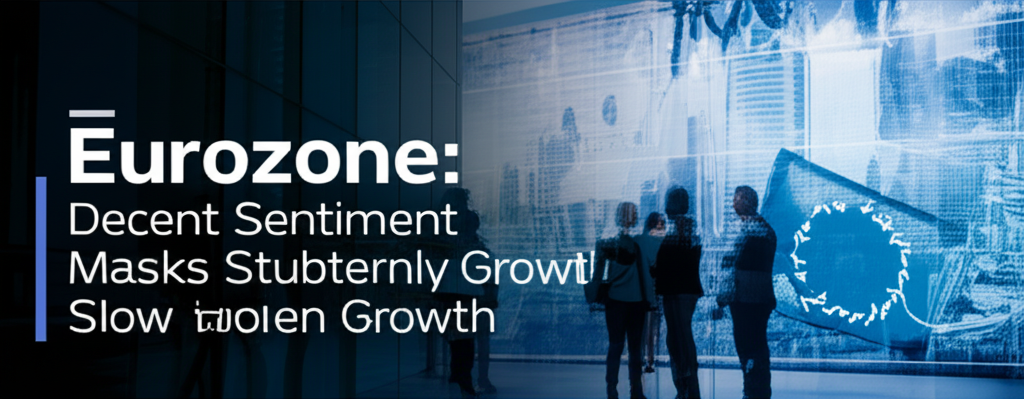Decent Eurozone Sentiment Masks a Sputtering Growth Engine
The economic narrative emerging from the Eurozone presents a peculiar paradox: while sentiment surveys suggest a slowly improving outlook, the underlying hard data continues to paint a picture of an economy struggling to gain meaningful traction. For young adults navigating the complexities of personal finance and investment, understanding this disconnect is crucial. It’s a classic case of what people *feel* about the economy versus what the numbers *actually* say, and right now, the two are not quite aligning.
Recent sentiment indicators, such as the Purchasing Managers’ Index (PMI) data for both manufacturing and services, have shown signs of stabilization, even modest improvement, moving away from the multi-year lows observed in late 2023. Consumer confidence, while still subdued, has nudged upwards, and business expectations, particularly in the services sector, reflect a cautious optimism. This “decent sentiment” can be attributed to several factors: inflation has been receding faster than anticipated, leading to hopes of interest rate cuts from the European Central Bank (ECB) later in the year. Energy prices, though volatile, have largely come down from their peak, easing a significant cost burden on businesses and households. Moreover, the Eurozone has largely avoided a technical recession, offering a psychological boost that perhaps the worst has been averted. This sentiment suggests that economic agents are increasingly looking past the immediate challenges, anticipating a more benign environment on the horizon.
However, beneath this veneer of tentative positivity, the Eurozone’s growth engine remains very much in low gear. The region’s Gross Domestic Product (GDP) growth has been anemic, hovering near stagnation for several quarters. Major economies like Germany, traditionally the industrial powerhouse of Europe, have been grappling with significant headwinds, impacting overall Eurozone performance. Industrial production across the bloc has seen persistent weakness, reflecting ongoing struggles in the manufacturing sector due to high energy costs, subdued global demand—especially from China—and tighter financing conditions. Businesses, despite their improving sentiment, are still facing the pinch of higher borrowing costs resulting from the ECB’s aggressive rate hikes aimed at taming inflation. This tight monetary policy, while necessary to bring inflation under control, has dampened investment and consumer spending, acting as a brake on economic expansion. Retail sales have shown sluggishness, indicating that consumers, despite the easing of inflationary pressures, remain cautious with their discretionary spending, likely due to a combination of past price shocks and continued economic uncertainty. The labor market, while remarkably resilient so far, is typically a lagging indicator, and any prolonged period of economic stagnation could eventually exert pressure on employment figures. This dichotomy between ‘soft’ sentiment data and ‘hard’ economic output data highlights a fundamental challenge: hopes and expectations are improving, but real economic activity has yet to catch up.
The implications of this divergence are significant. For policymakers, it means navigating a tricky landscape where the perception of recovery might outpace the reality, potentially leading to misjudgments in monetary and fiscal policy. For individuals, it underscores the importance of looking beyond headlines and superficial indicators. While a ‘feel-good’ factor can influence markets, sustainable economic progress requires tangible growth in output, investment, and consumption. The Eurozone’s journey out of its current economic slump will likely be a prolonged and bumpy one, necessitating not just the careful calibration of monetary policy but also structural reforms to boost productivity and competitiveness. The current sentiment provides a much-needed psychological lift, but until the underlying engine truly roars back to life with robust data confirming it, caution remains the watchword for anyone tracking Europe’s economic pulse.





